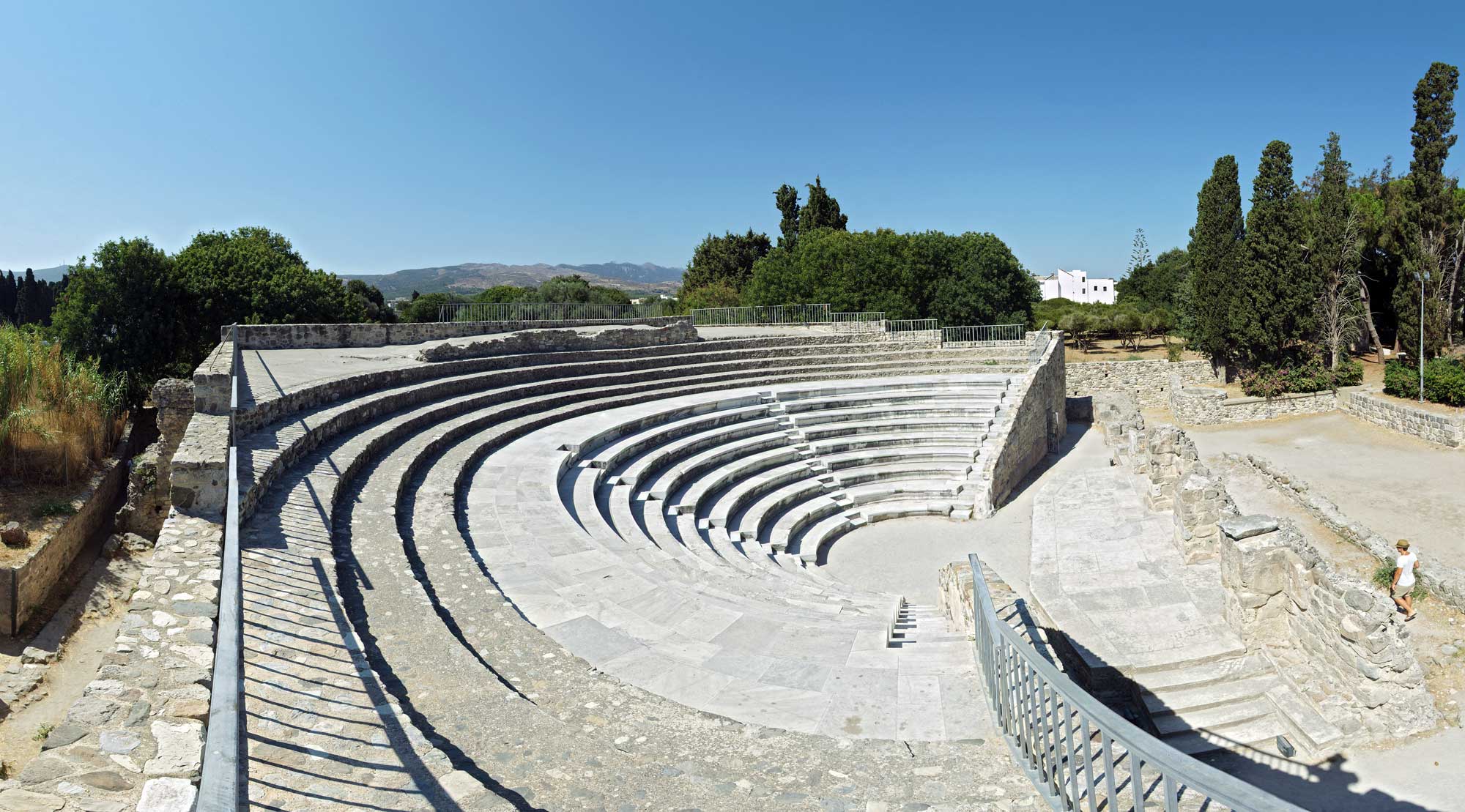Must See on Kos: Roman Odeon
The Roman Odeon is one of the archeological landmarks of the Ancient Town of Kos. The building was discovered during excavations carried out in 1929 by the Italian archaeologist Luciano Laurenzi, who described his discoveries on the island in his paper “Nuovi contributi alla topografia storico archeologica di Coo,” in 1931.
You can reach the Kos Roman Odeon in less than 10 minuted by car from Astir Odysseus Kos Resort & Spa. As part of the complex of the Ancient Town of Kos, the Roman Odeon is one of the must-see landmarks during your visit, whether you are a history buff or you just want a beautiful photographic memento from our island. Don’t forget your camera, as this picturesque site is one of the symbols of Kos.
Although the original purpose of the Odeon was for music shows and competitions, the building was also used as the seat of the senate in Roman times. The Roman Odeon was originally roofed and had a capacity of about 750 people. It is preserved in good condition, despite several earthquakes that leveled other parts of the Ancient Town. Out of the fourteen rows of marble seats that made the area reserved for spectators in the Odeon’s heyday, only the first nine are the original, the rest being the result of restoration works. The first rows were reserved for noblemen, while the rest were designed for the regular folk. In its current form, the Roman Odeon boasts 18 rows. The original Odeon dates from the 2nd century. A.D.
During excavation works, archeologists discovered 18 marble statues, of which the most important is that of Hippocrates, currently exhibited at the Archaeological Museum of Kos. The orchestra stage was in good condition when unearthed and remains an excellent scene for musical and cultural events, which are held in summer months under the patronage of various cultural associations, the Ministry of Culture and Sport, and the municipality of Kos. When you visit the Roman Odeon do not miss the photo exhibition of the Archaeological Institute of Aegean Studies.

